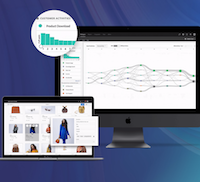Artificial intelligence (AI) is changing business as we know it, but what many people don’t realize—or at least don’t think about—is how AI is also impacting our lives outside of the office.
Artificial intelligence (AI) is changing business as we know it, but what many people don’t realize—or at least don’t think about—is how AI is also impacting our lives outside of the office.
Below we take a look at five different ways in which AI is impacting our personal world each and every day.
1. Self-Driving And Parking Vehicles
Self-driving and parking cars use deep learning, a subset of AI, to recognize the space around a vehicle. Technology company Nvidia uses AI to give cars “the power to see, think, and learn, so they can navigate a nearly infinite range of possible driving scenarios,” Nvidia explains on its website. The company’s AI-powered technology is already in use in cars made by Toyota, Mercedes-Benz, Audi, Volvo, and Tesla, and is sure to revolutionize how people drive—and enable vehicles to drive themselves.
2. Digital Assistants
Apple’s Siri, Google Now, Amazon’s Alexa, and Microsoft’s Cortana are digital assistants that help users perform various tasks, from checking their schedules and searching for something on the web, to sending commands to another app. AI is an important part of how these apps work because they learn from every single user interaction. This allows them to better recognize speech patterns and serve users results that are tailored to their preferences. Microsoft says that Cortana is “continually learns about its user” and that it will eventually anticipate user needs.
https://www.youtube.com/embed/FQn6aFQwBQU
3. Vehicle Recognition Identification
Did you know that many of the traffic cameras around your city use AI to read license plates? Companies such as PlateSmart, IntelliVision, and Sighthound, among others, use computer vision—a form of AI that can see and understand images—along with deep learning to turn conventional surveillance into vehicle monitoring; this is a very important part of integrated traffic systems and also a big help to authorities as well, as surveillance videos are now searchable for specific plate numbers. That’ll make you think twice about blowing through that red light.
https://www.youtube.com/embed/bVZvu7Mpo5Y
4. Robots
The Roomba 980 model vacuum (the one that cleans your floor on its own) uses AI to scan a living area’s size, look for objects that might be in the way, and remember the best route for cleaning the carpet. The vacuum bot can also identify how much cleaning it needs to do based on the size of the room, repeating a cleaning cycle three times in smaller rooms or cleaning twice in a medium-sized room.
https://www.youtube.com/embed/RwRKX2z3XOM
5. Transportation
Machine learning, another subset of AI, powers some of the magic that happens inside of apps like Uber.
“[AI and machine learning] are critical to supporting Uber’s mission of developing reliable transportation solutions for everyone, everywhere,” the company explains on its Uber Engineering site. “… We use ML to enable an efficient ride-sharing marketplace, identify suspicious or fraudulent accounts, suggest optimal pickup and drop-off points, and even facilitate more delicious UberEATS delivery by recommending restaurants and predicting wait times so your food can get to you when you need it.”

